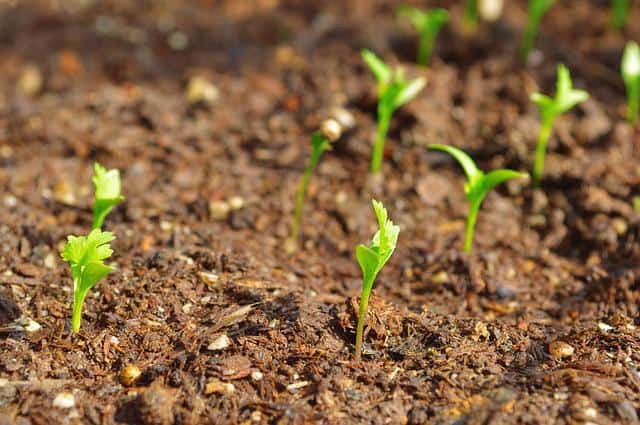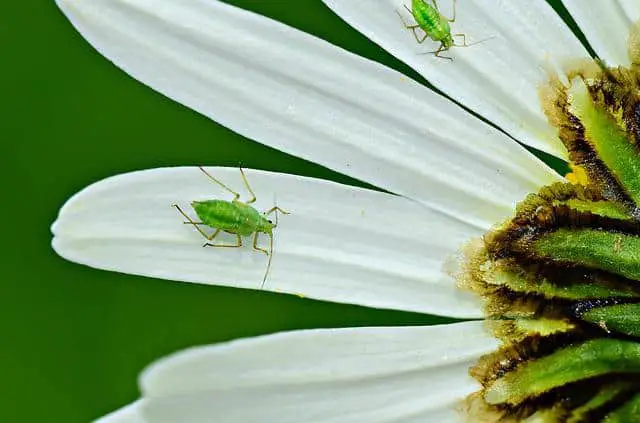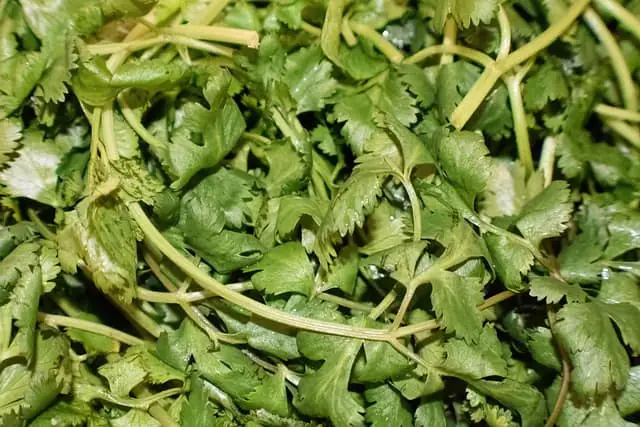Are you concerned about why is my cilantro turning yellow? Cilantro is one of the central herbs in Indian, Mexican, and Asian recipes and is harvested from the Coriander plant.
It’s not a very difficult plant to grow, which makes it a popular one for home gardening, whether it’s indoors or outdoors.
It’s a selfish plant, however, and it needs its own space, away from other plants in your garden. Though it’s generally pretty easy to both grow and harvest, cilantro has a tendency to start turning yellow for a variety of reasons.
While most of its yellowing is controllable and reversible, it’s important to know what causes it in the first place.
Why Is My Cilantro Turning Yellow?

There are several possibilities for why your cilantro is turning yellow, including a lack of water, the nitrogen levels in the soil being off, not getting enough sunlight, aphids, and Carrot Motley Dwarf Disease or Leaf Spot Disease.
If it sounds like a lot can go wrong with your Cilantro, that’s because it can. Fortunately, most of the above-listed issues are controllable, so long as you monitor your soil, provide enough water without overdoing it, and ensure that your Cilantro plant is getting plenty of sunlight.
According to most experts, you shouldn’t harvest nor consume any of the leaves on the coriander plants if they are turning or have already turned yellow. Turning yellow isn’t necessarily a foregone conclusion that the plant is diseased, but it’s not worth the potential health problems of consuming it either.
In most cases, it’s going to be poor nutrients in the soil or over watering that’s causing the leaves to turn yellow in color but you shouldn’t take the risk by eating them. If the yellowing isn’t too bad, you should carefully prune the yellow portions of the plant, especially if you suspect disease.
1. Insufficient Sunlight or Warmth
You have to walk a fine line with cilantro. The plant is at its best when grown in temperatures between 50°F and 85°F. If you can properly position the plant so that it gets a mixture of direct sunlight and shade throughout the day, you will get the most out of it.
If you suspect that a lack of or overabundance of sunlight is the driving issue behind the yellowing leaves, you should try repositioning the plant so that it’s getting sunlight but isn’t directly in the sun for long periods.
2. Nutrient Deficiency

There are four primary nutrients that affect Cilantro’s ability to thrive—nitrogen, iron, magnesium, and manganese. Your best tool for keeping the nutrient levels balanced is a soil tester. All of the above-listed nutrients have a direct impact on the pH and acidity levels of the soil.
While most soil testers aren’t going to tell you exactly which nutrient is deficient (they’ll just tell you the pH and alkalinity), something as simple as Miracle-Gro or some homemade additives such as crushed eggshells (Calcium) or used coffee grounds (nitrogen) will do nicely.
3. Over or Under Watering
Both of these will cause the leaves on your Cilantro (Coriander) plant to yellow. Overwatering depletes the oxygen in the soil and underwatering causes chlorosis. You can determine how often to water your plants by studying them each time you water.
Plants react to needed water and too much water very quickly and you will notice the change, for good or for bad, within half an hour.
4. Aphids

This shouldn’t be as much of a concern if you are growing Cilantro indoors but if you are growing outdoors, aphids are your primary concern. Other insects can negatively impact your Cilantro as well, but aphids are the primary nemesis of Cilantro plants.
5. Carrot Motley Dwarf Disease and Leaf Spot
These are two of the most common diseases that the Coriander plant has to deal with. It’s very easy to mistake either one of these diseases for one of the other problems listed above or vice versa.
For both Leaf Spot and Carrot Motley, you can avoid them altogether by planting quality seeds from a well-known and trusted source. Cilantro and other leaves don’t often suffer from these diseases unless the seeds in the packet were contaminated somehow.
Once either of these two diseases gains a foothold, it’s not very likely that you will be able to salvage the plant at all and will have to plant new cilantro seeds at the first opportunity.
See a similar post: How to Pick Cilantro Without Killing Plant?
Summary
Cilantro isn’t a difficult herb to grow. So long as you can provide the plant with sufficient sunlight and shade, while carefully monitoring how much water and nutrients it needs, you should be successful most of the time. Disease isn’t common with Cilantro either and is usually the result of contaminated seeds.
Frequently Asked Questions
Why is my cilantro wilting?
Cilantro requires 6 hours of full sunlight. During the summer months, when the days are really long, you will have to find a good position for the plant so it’s not overexposed by the sun and gets plenty of shade as well.
Is yellow Cilantro safe to eat?
It’s not safe to eat yellow Cilantro. It’s either diseased or well past the point of its usefulness. While it may not harm you, there is a possibility that it can make you sick. Since yellow Cilantro isn’t going to taste very good, eating it will only put you at risk with no upside.
How often should Cilantro be watered?
The soil should always be moist. Overwatering the soil until it is soaked is far too much. So long as the soil looks and feels moist, then you are good to go.
How many times can you harvest Cilantro?
Before the Cilantro plant reaches its bolting phase, you should harvest it at least once per week. If the plant is doing really well, you can get away with harvesting the leaves more than once a week. The longer you harvest the leaves, the longer you will keep the Cilantro plant from bolting.
Should you prune Cilantro?
When you are harvesting Cilantro leaves, you should only cut from the outside leaves, never from the inner stems. That way, the Cilantro will continue to grow so you can harvest more leaves from it once per week.

Hey, I’m Lisa and I’ve been an avid gardener for over 30 years. I love writing, talking and living in the garden! Feel free to connect with me on my socials below


